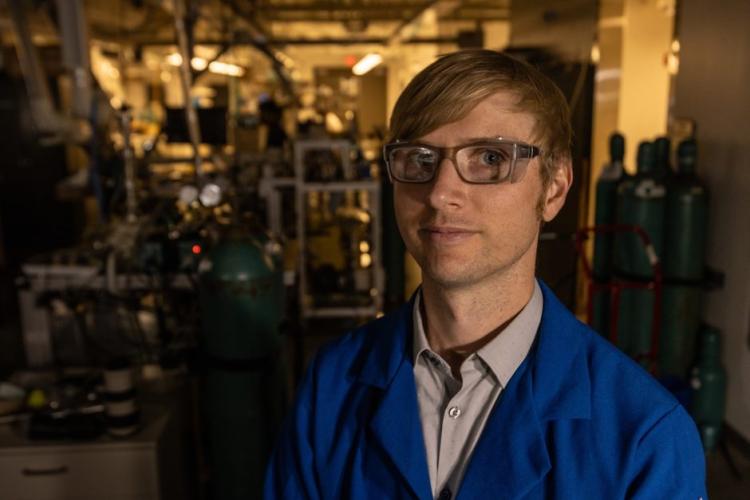
Matthias Young
Contact: Eric Stann, StannE@missouri.edu
Photo by Abbie Lankitus
From electric vehicles to wireless earbuds, traditional lithium-ion batteries power our daily lives as they charge fast and store plenty of energy. However, they rely on a solution known as liquid electrolyte, which can catch on fire if damaged or overheated.
University of Missouri researchers may have a solution. Assistant Professor Matthias Young and team are figuring out how to use solid electrolytes instead of liquids or gels to make solid-state batteries, which are safer and more energy efficient.
“When the solid electrolyte touches the cathode, it reacts and forms an interphase layer that’s about 100 nanometers thick — 1,000 times smaller than the width of a single human hair,” said Young, who has joint appointments in Mizzou’s College of Engineering and College of Arts and Science. “This layer blocks the lithium ions and electrons from moving easily, increasing resistance and hurting battery performance.”
Understanding this issue with solid-state batteries — and how to overcome it — has vexed scientists for more than a decade.
Young’s team tackled the problem by better understanding the root cause.
Using four-dimensional scanning transmission electron microscopy (4D STEM), the researchers examined the atomic structure of the battery without taking it apart — a revolutionary breakthrough for the field. This novel process allowed them to gain a fundamental understanding of the chemical reactions happening inside batteries, ultimately determining that the interphase layer was the culprit.